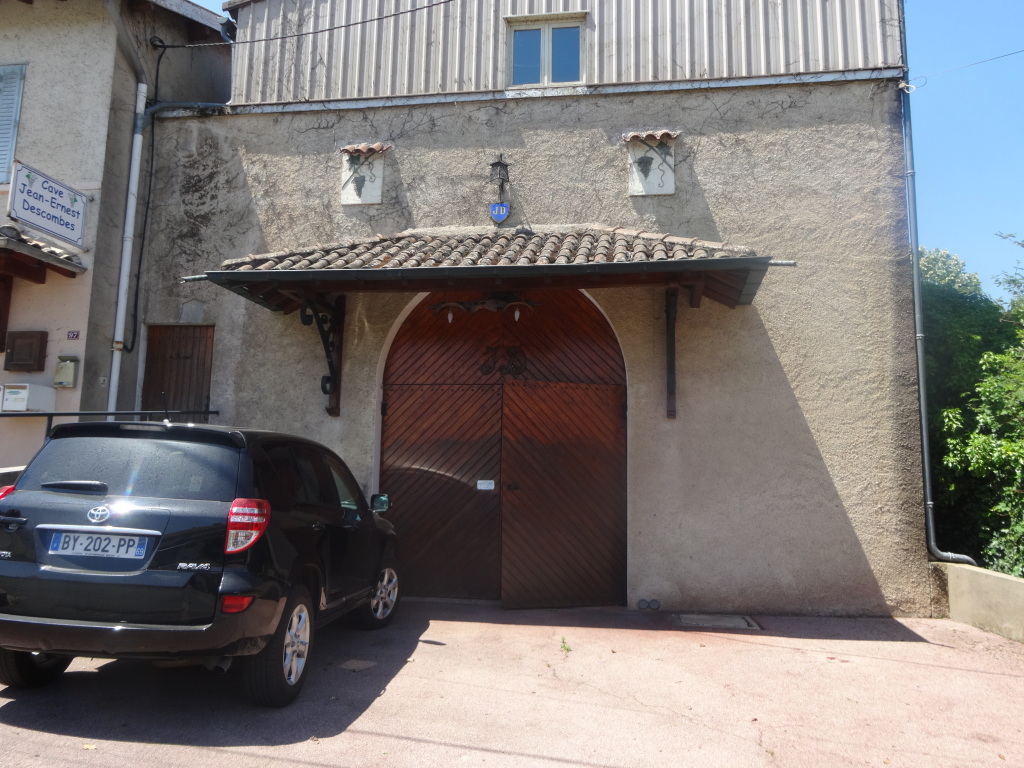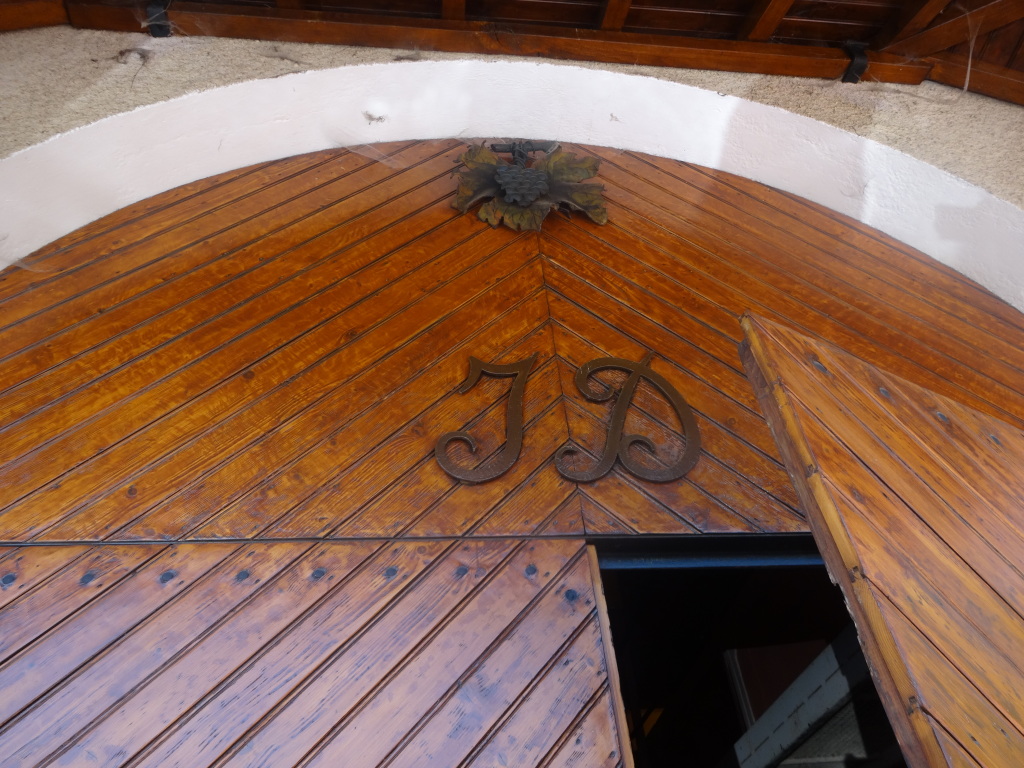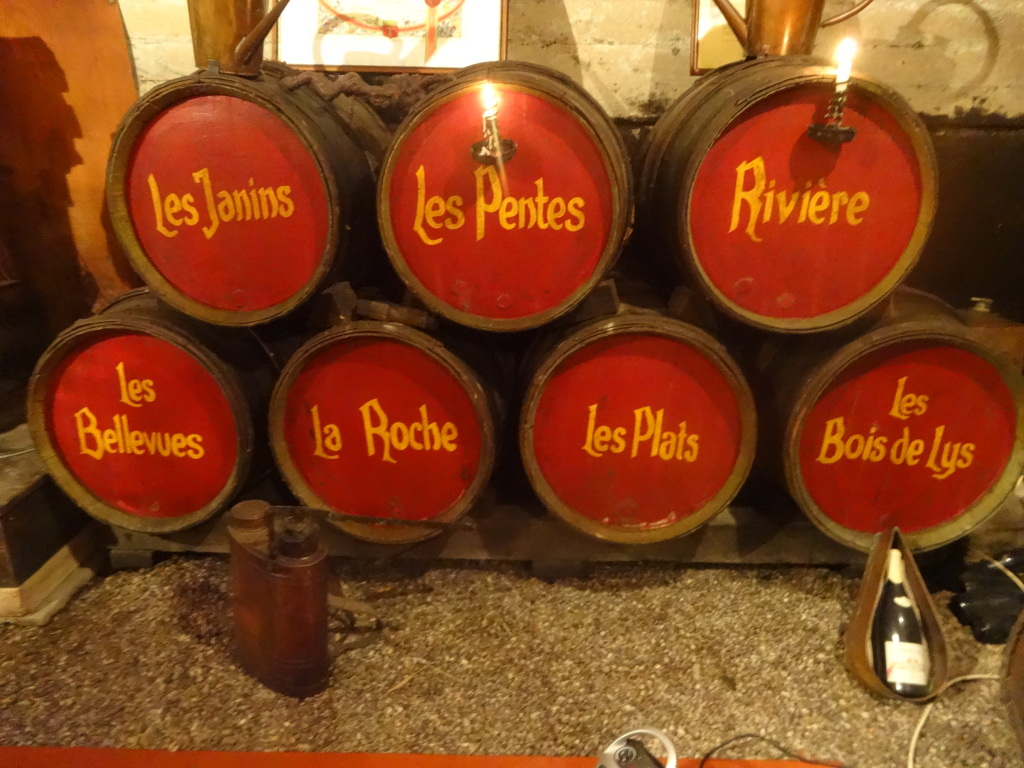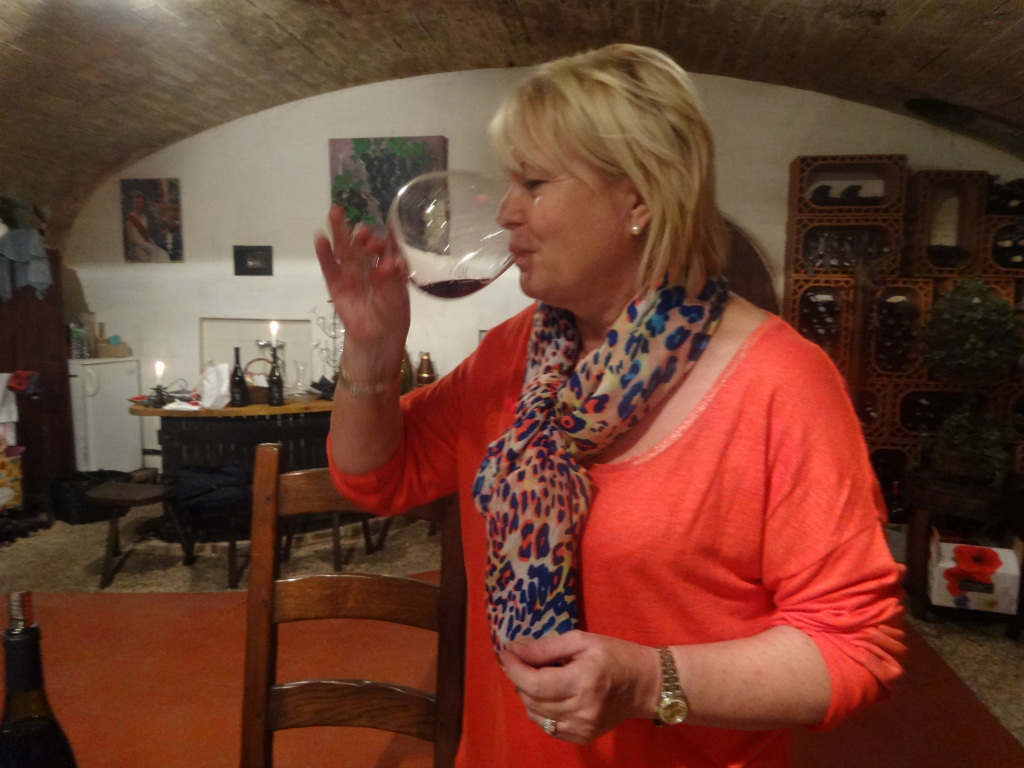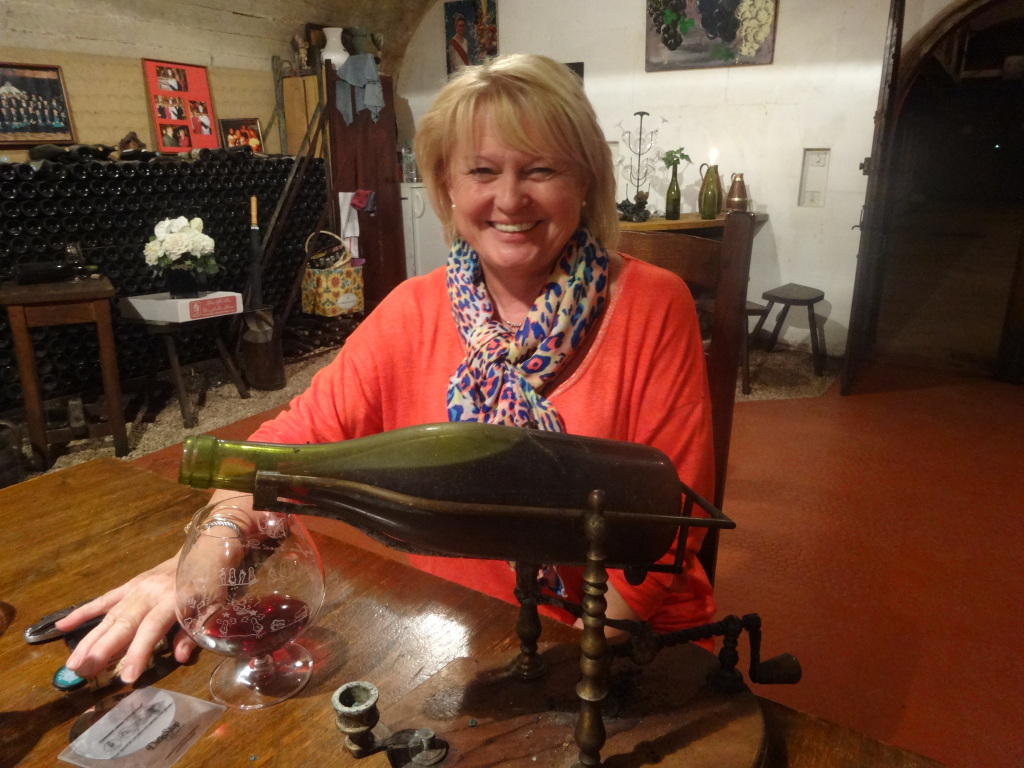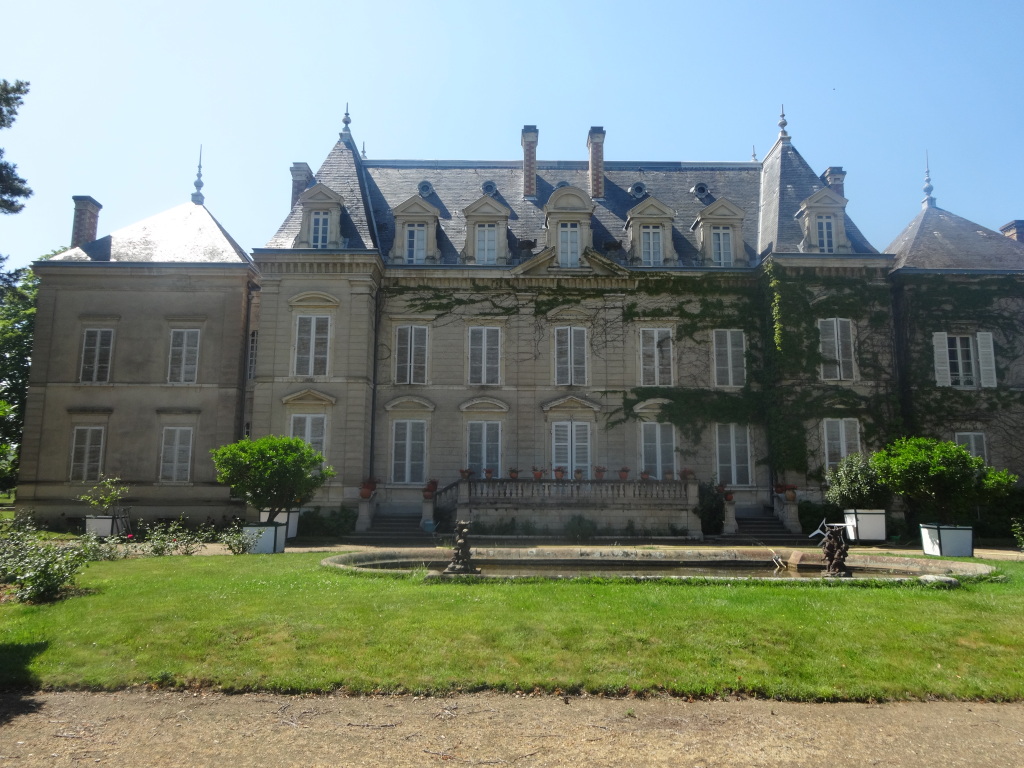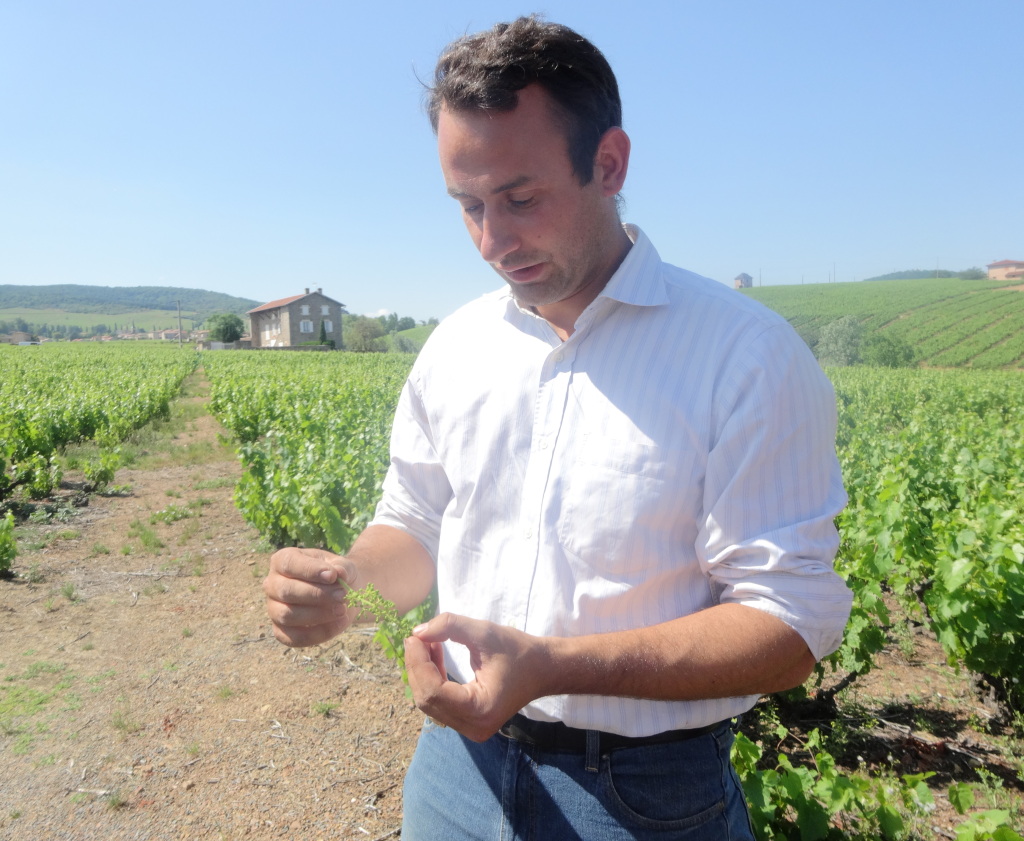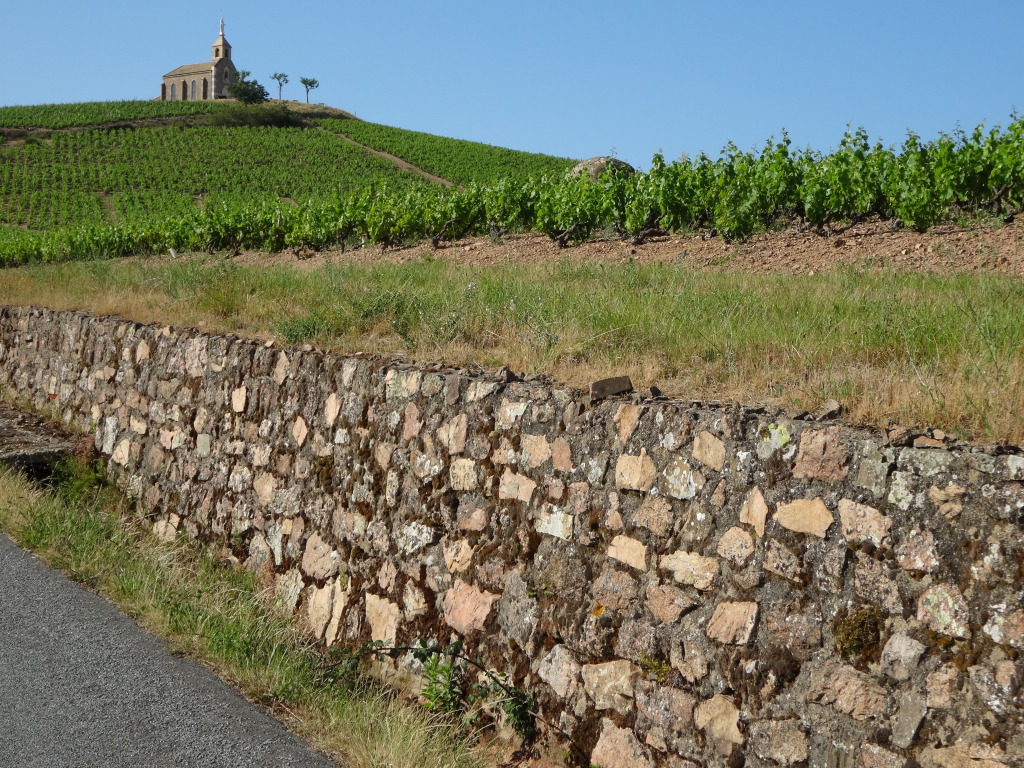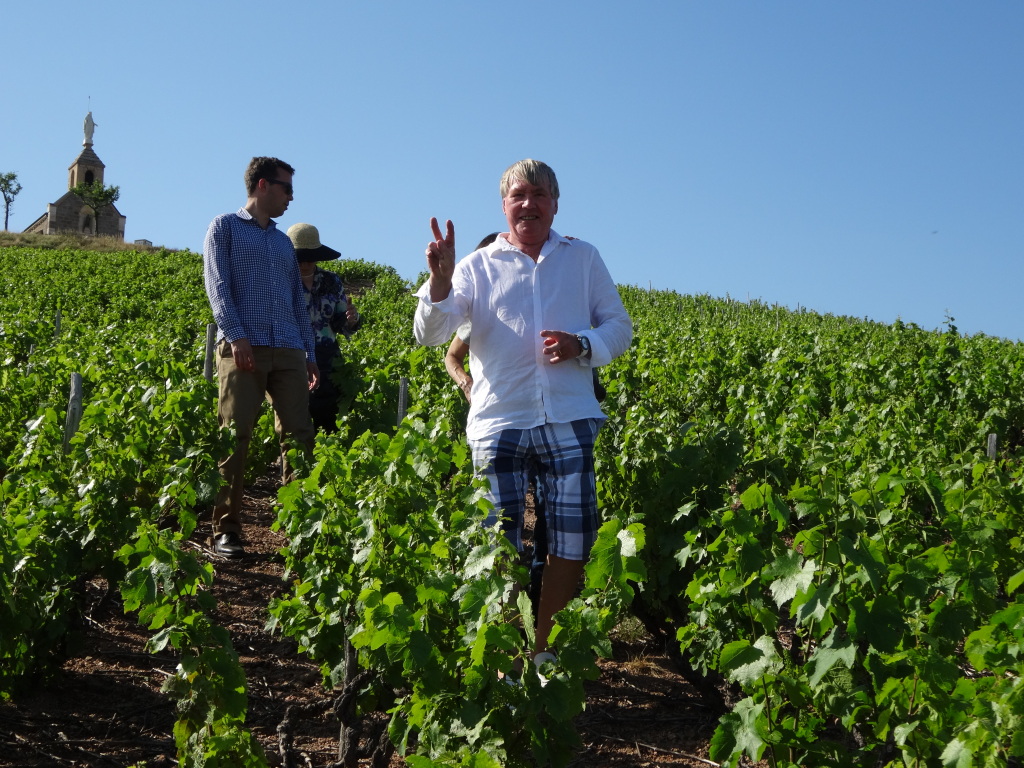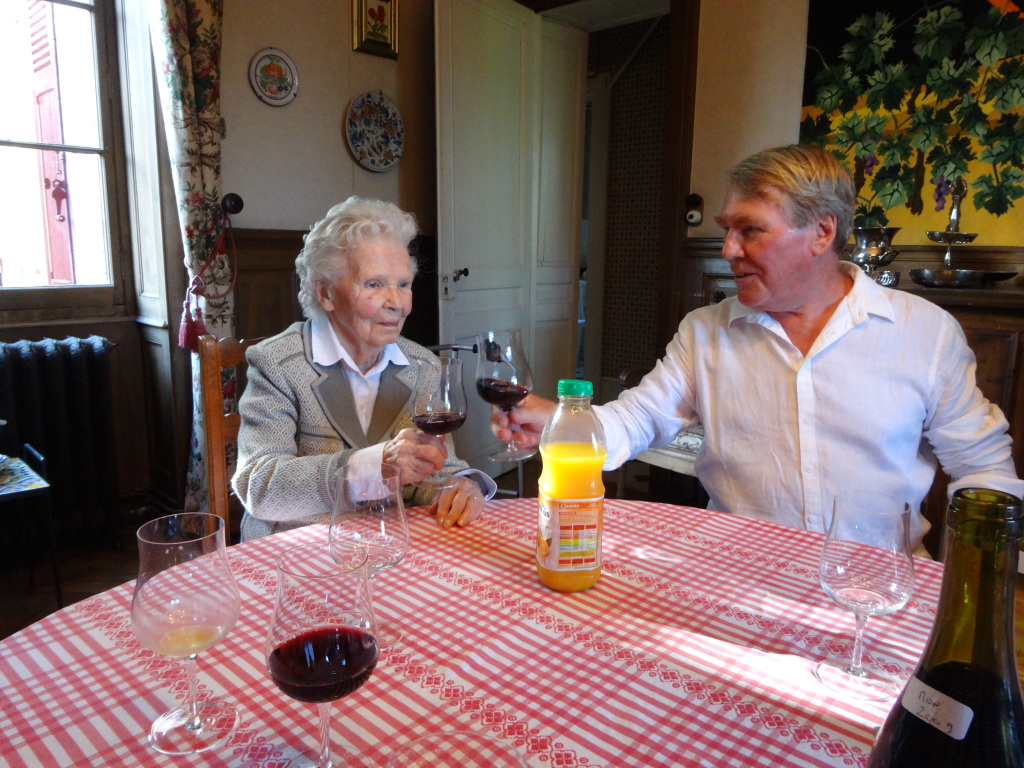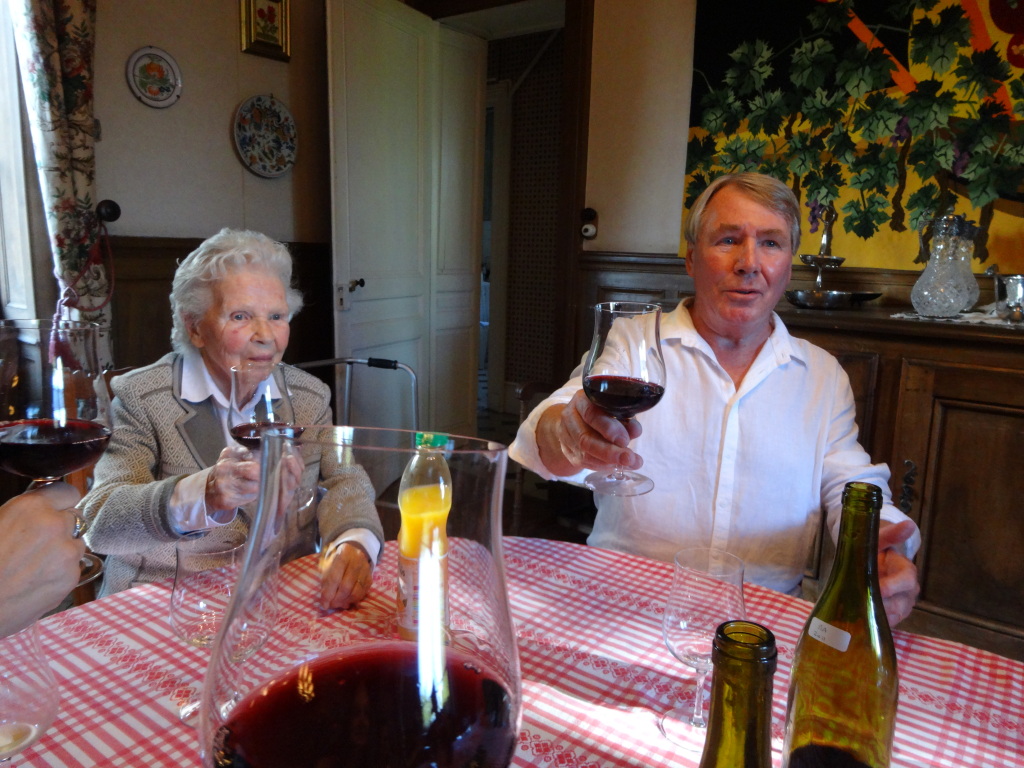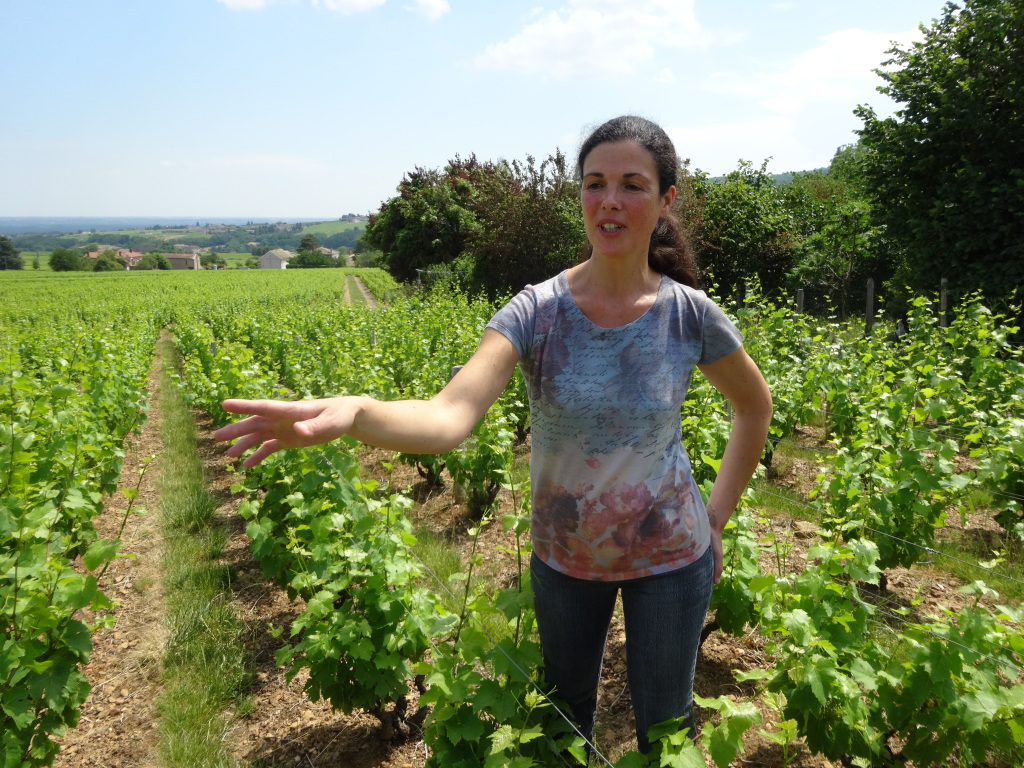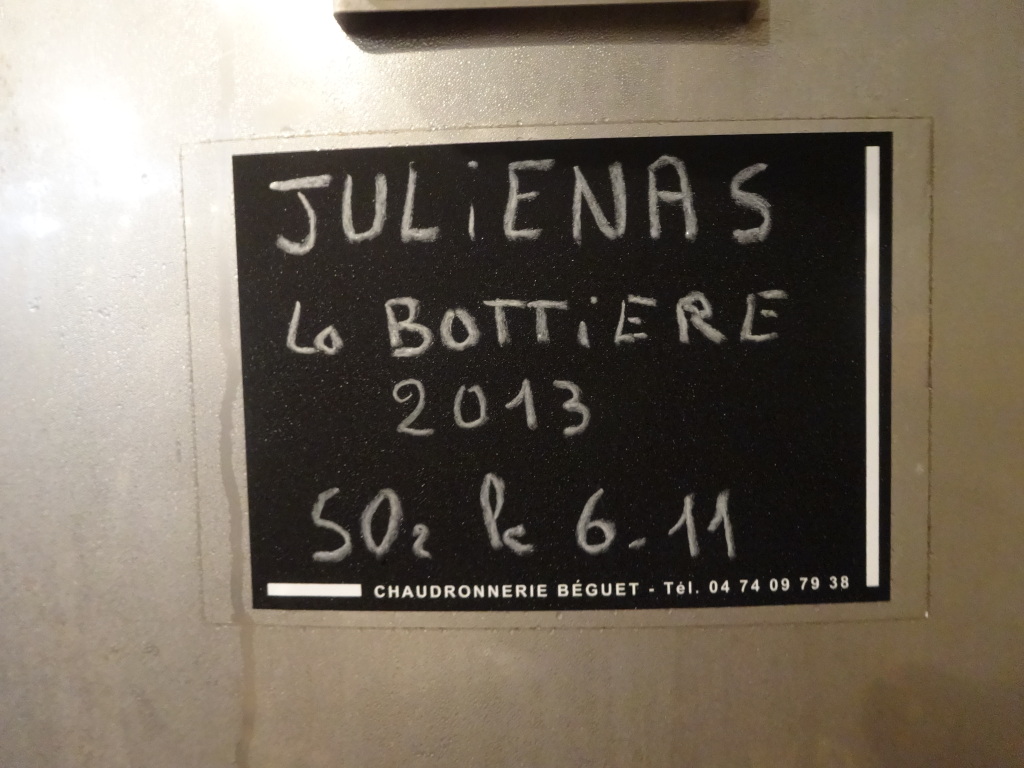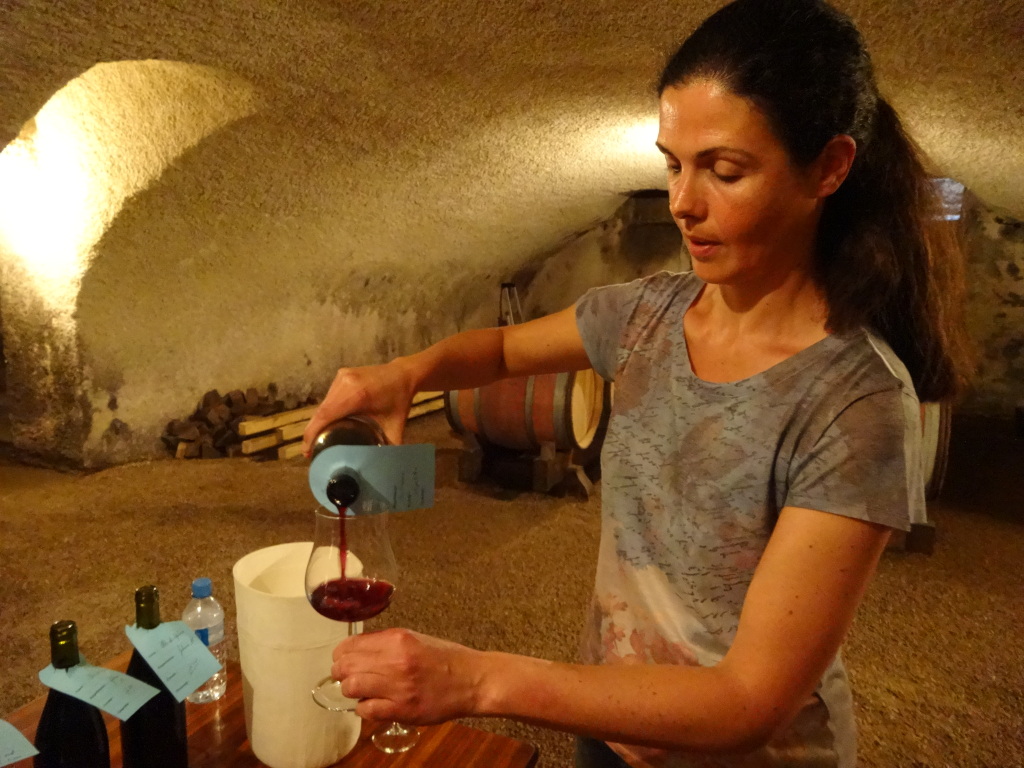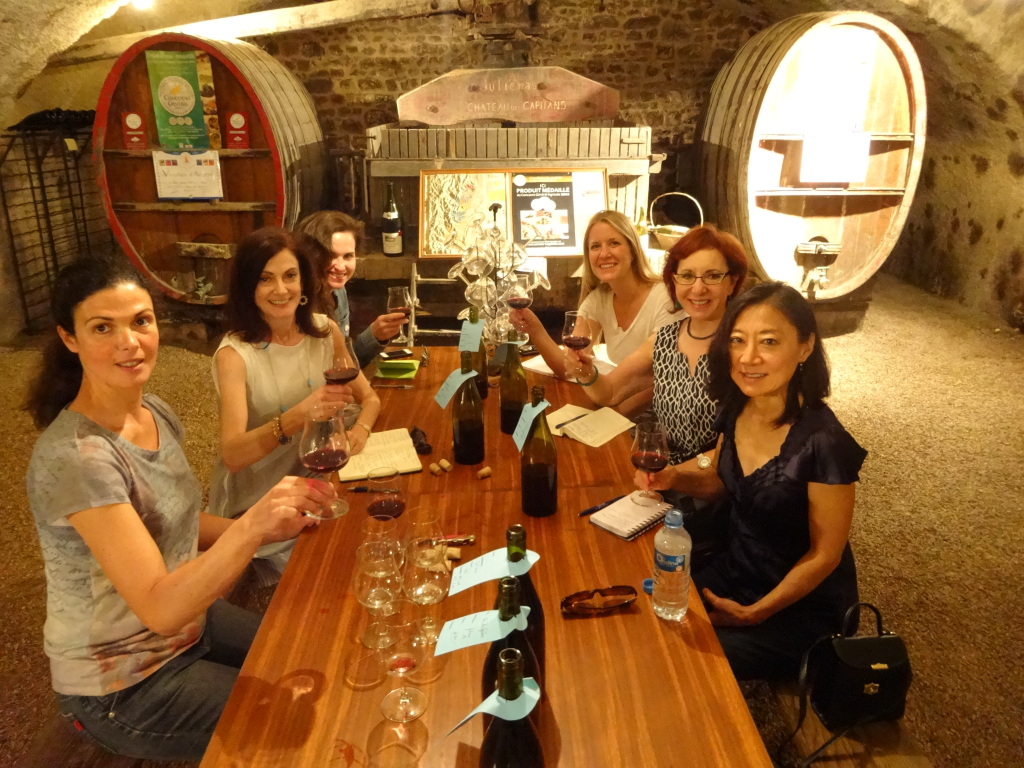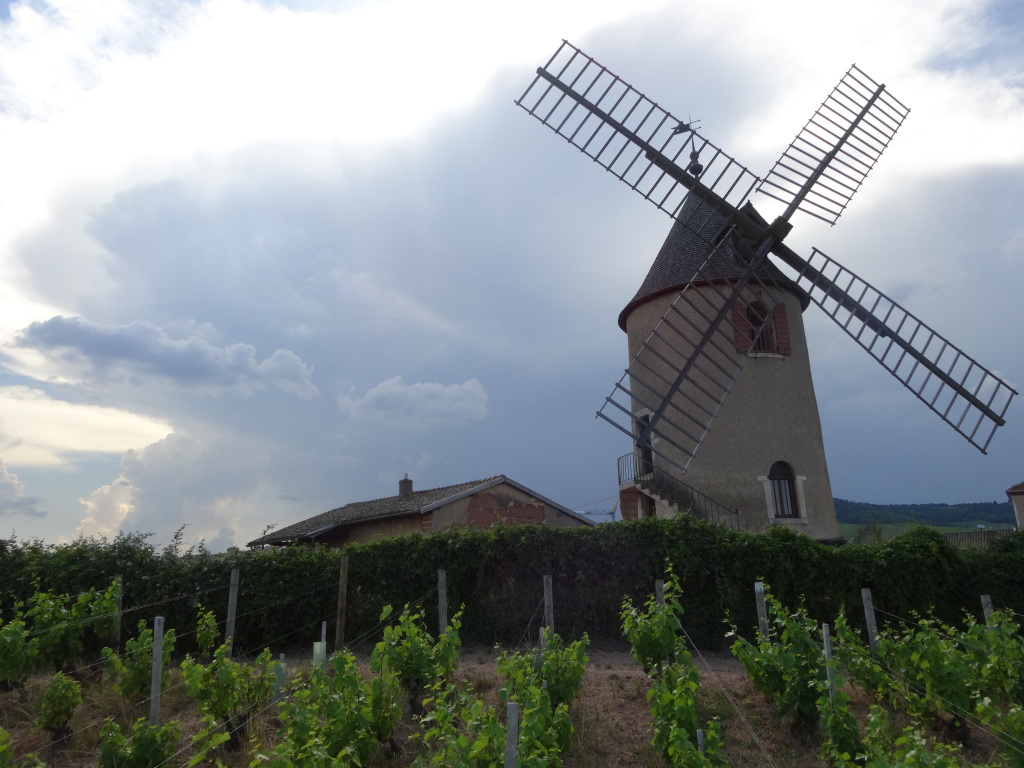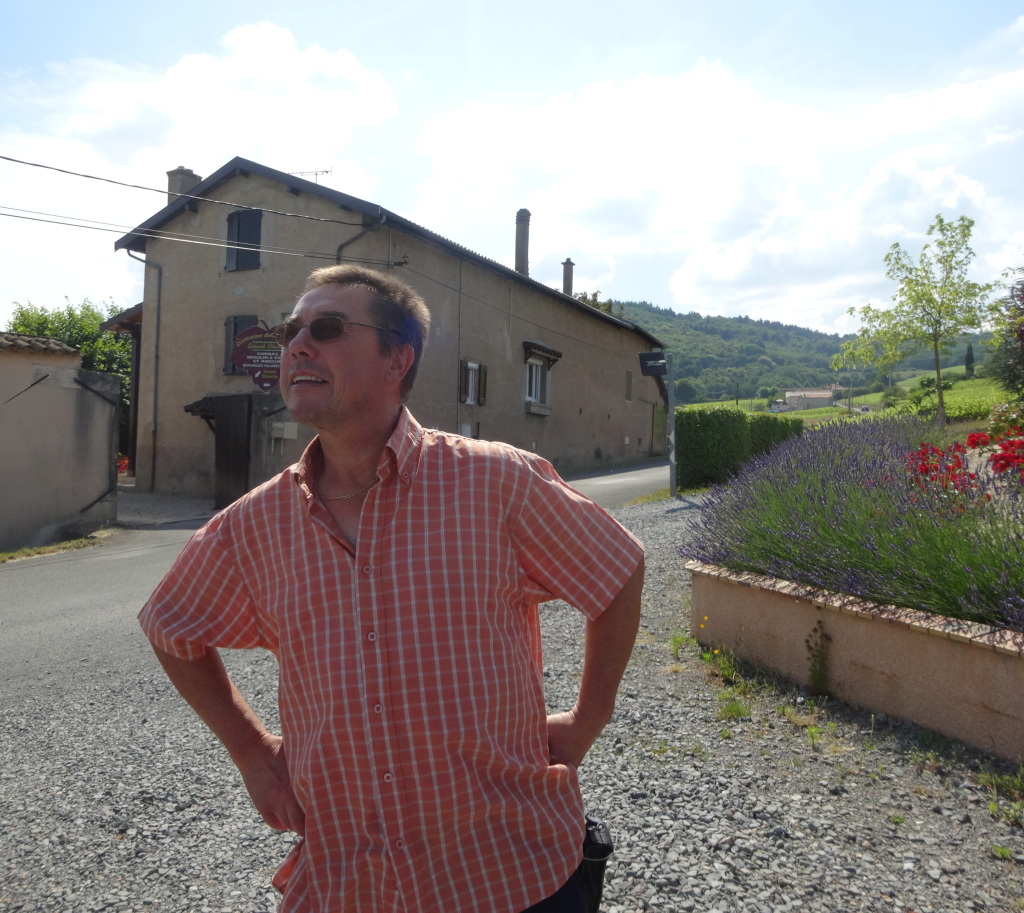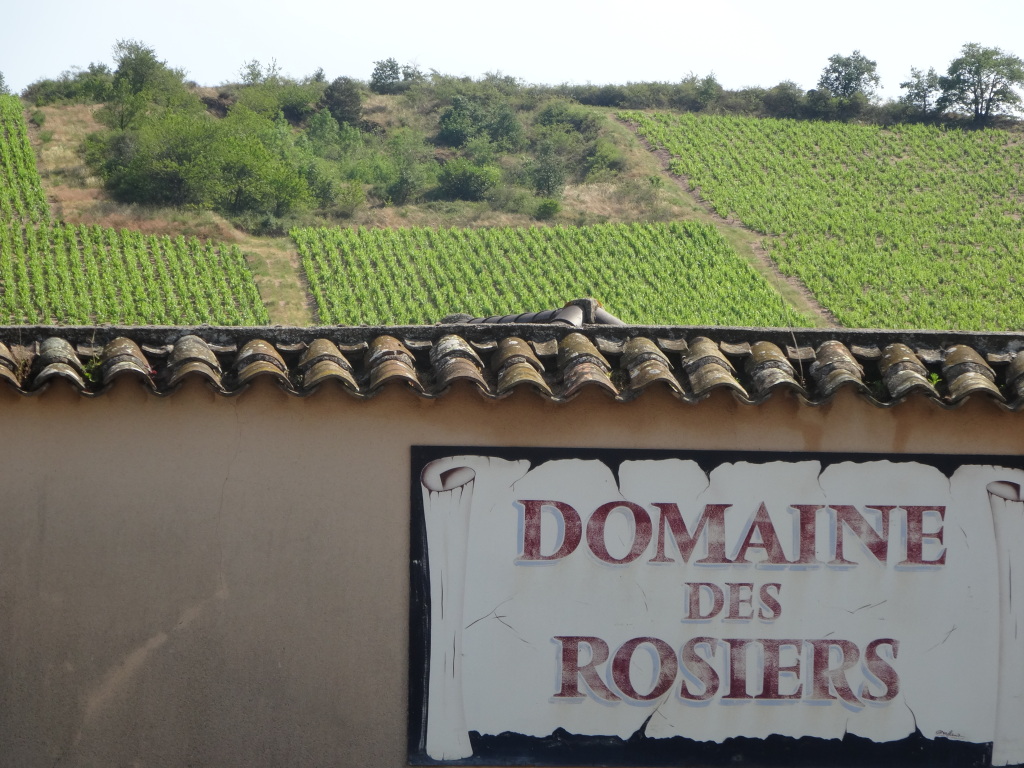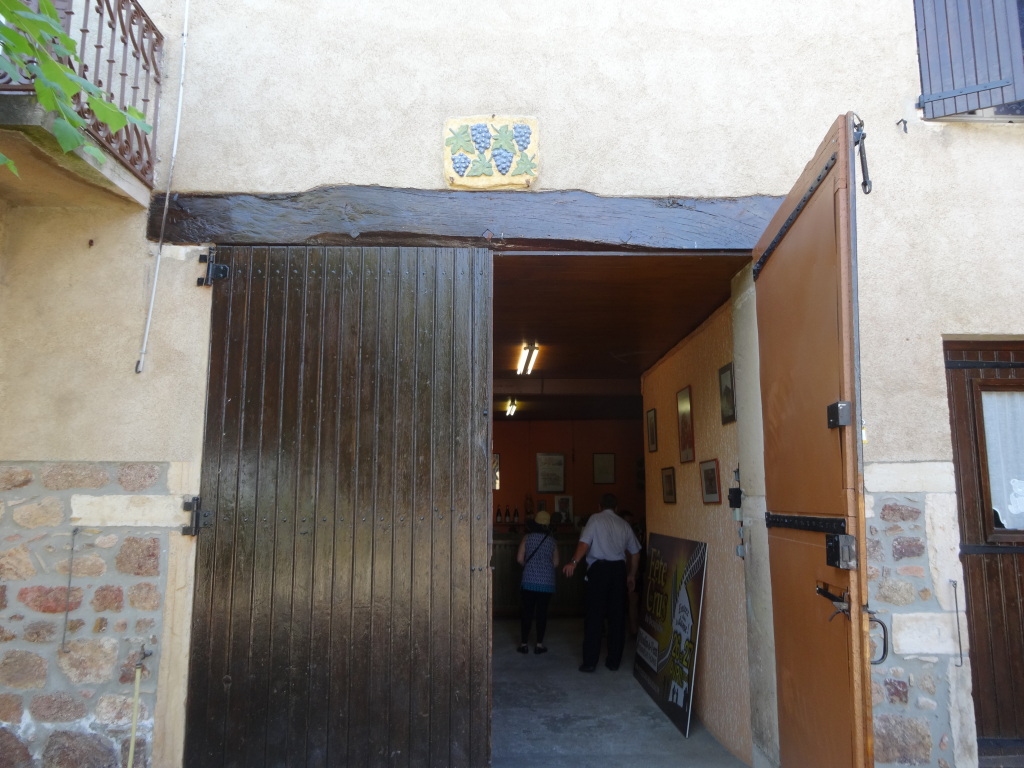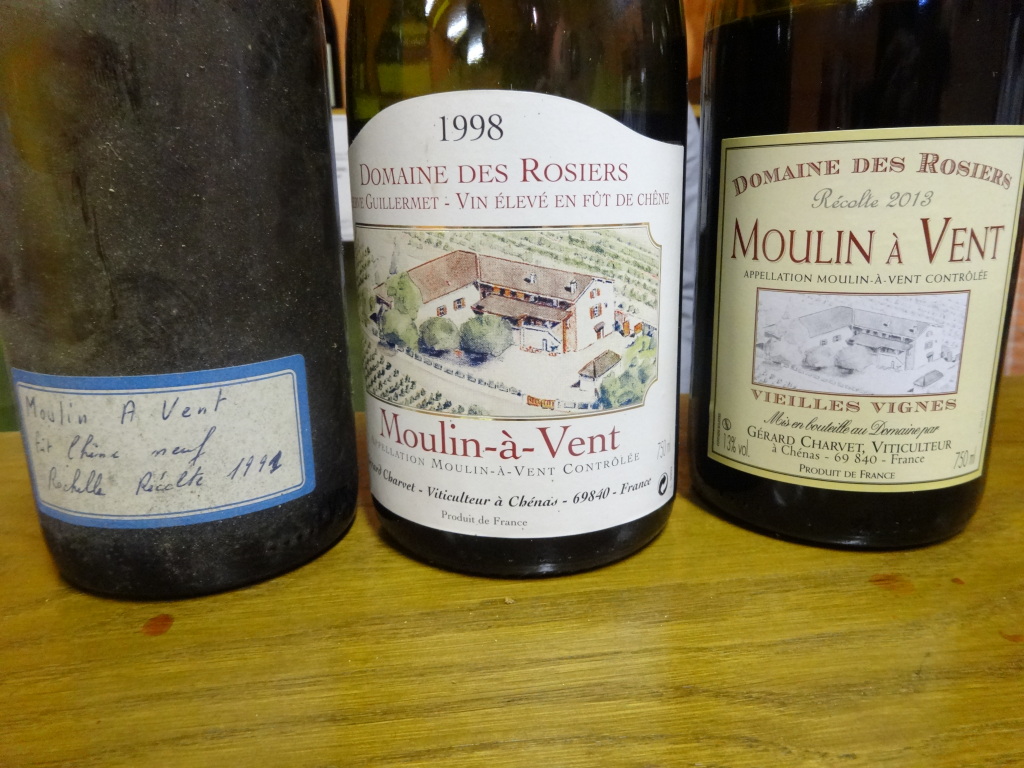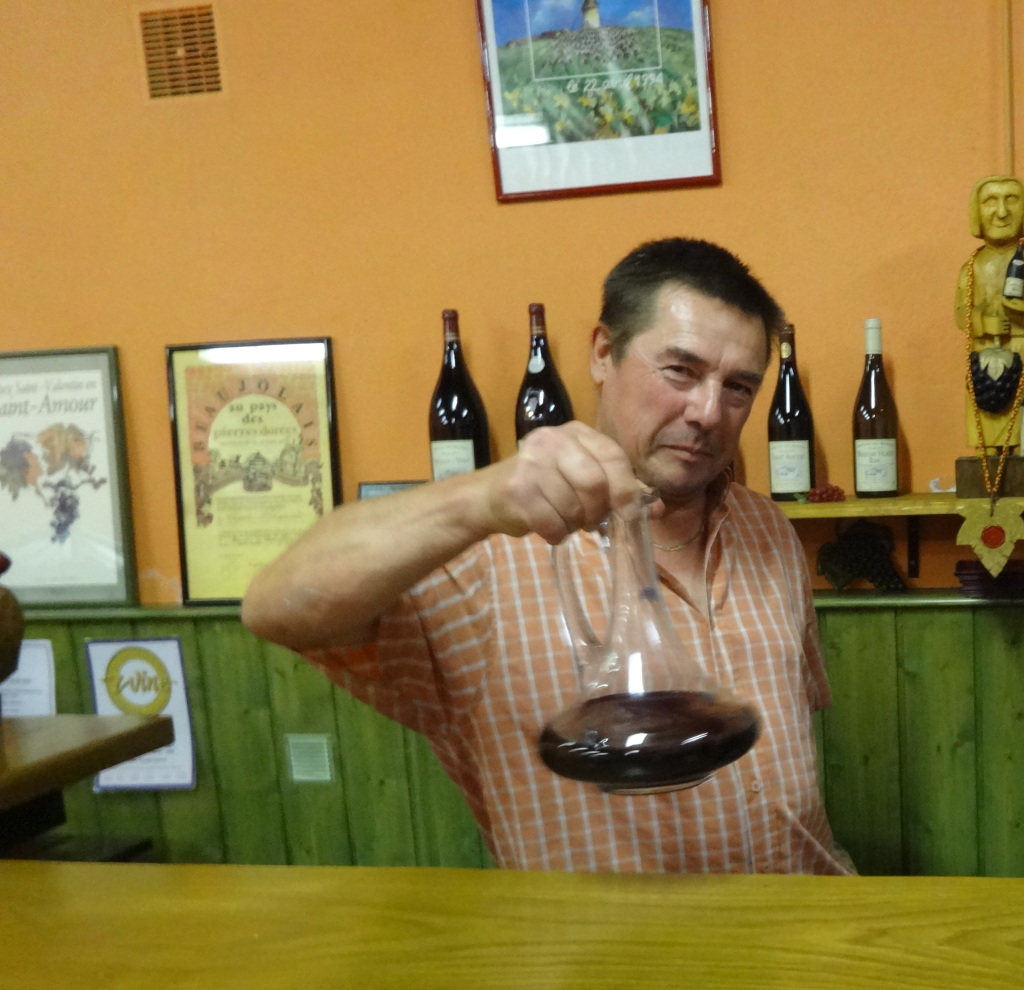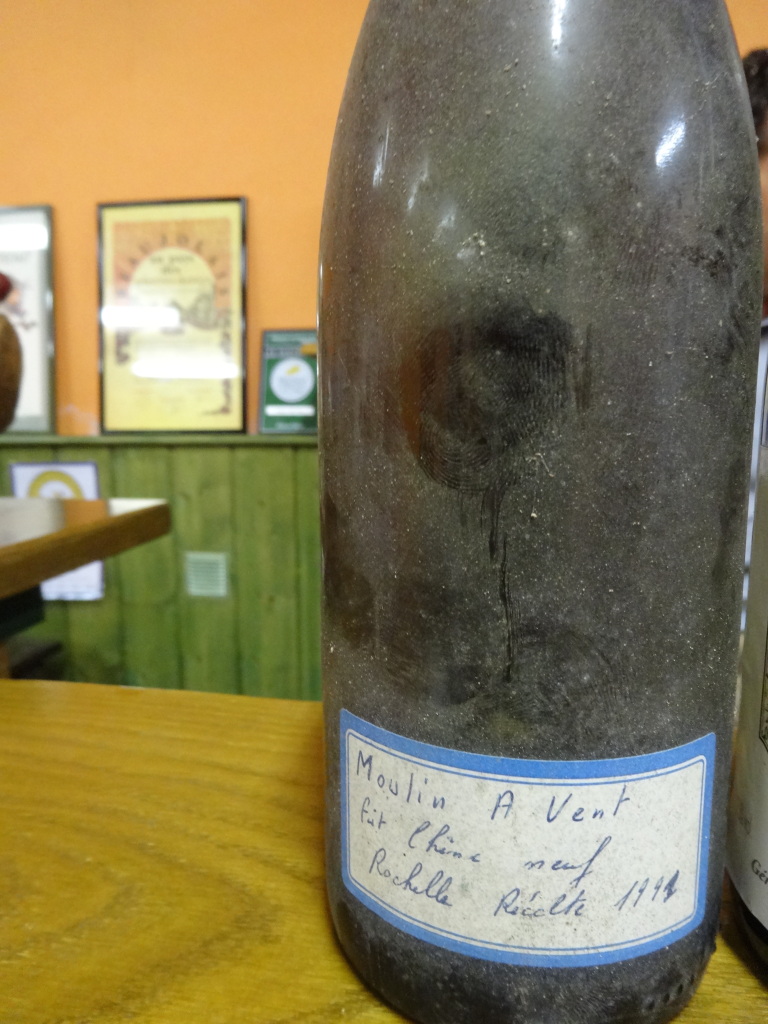As the world gets ready to celebrate the arrival of the 2014 Beaujolais Nouveau, it’s a good time to turn the spotlight on this region’s wines, especially the complex, aromatic and fascinating wines of the Cru Beaujolais. These Cru wines are a revelation for anyone who is accustomed to drinking the super fresh, super fruity and super young Beaujolais Nouveau. After all Nouveau is a style unto itself, bottled only weeks after the grapes are harvested. While Nouveau’s roots are in a wine to celebrate the harvest, the Cru wines are what Beaujolais is all about.

In June I joined a group of fellow journalists on a taste journey through five of the 10 Cru Beaujolais appellations. The producers we visited all make wine with the legendary Georges Duboeuf, who has done more to spread the world about high quality Beaujolais wine than any other producer from the region. For a look at why there’s more to Beaujolais than Nouveau, check out part one of this blog post.
Morgon
In Morgon, we walk into the caves of Jean-Ernest Descombes and are greeted by Nicole Descombes Savoye, “the queen of Beaujolais.” She is charming and energetic and leads us to a table where she’s prepared a tasting of her family’s wines.
Morgon was the first Cru to be named in Beaujolais. Descombes has vineyards in three climats within the Cru – Le Py, Bellvue and Le Bois. A climat is sub-appellation within a Cru, recognized for superior quality. Some of the vines farmed by Descombes are at least 100 years old. Georges Duboeuf started purchasing grapes from Jean-Ernest, Nicole’s father, in 1968. In 1970 Duboeuf bought all the fruit and still does to this day.
When Nicole’s parent’s died in 1993, she took over running the vineyards and the winery with Duboeuf’s help. They added her father’s name to the label as a tribute. He was a well-respected vintner in the area and everyone in the region it seemed, gathered in his caves.
Old vines mean small yields and concentrated flavors. Nicole and her winemakers vinify each block separately. Georges makes the blend at her winery and it is bottled in the Duboeuf facility.
“The wine is our work, our life,” Nicole says. She uses concrete vats so the wine can breathe. “In the cellar, in the domaine there is a spirit and the wine represents the winemaker. We make a wine like my father – very joyful. He loved the world and his wine cellar was always open.”
The Descombes wines are floral, with violet notes, and aromas and flavors of cherry, a little pepper and smoke, but soft and fresh. They are in a word, charming.
Nicole pours us a mystery wine, one that her father made. Instead of being ruby colored and light, it is very brick red, with dried fruit, licorice, brandied cherry and earthy notes. We are to guess the vintage, as clearly it is a much older wine. It has stewed fruit, leather, dried violet flavors. I guess 1992. It is a 1980. Who knew Cru Beaujolais aged so well? And, Nicole tells us, 1980 wasn’t even considered a great vintage in Beaujolais.
I am amazed to learn these wines sell for about $15 or less in the US.
As we depart she exclaims, “to sell wine you have to love it!”
Brouilly
In Brouilly we are standing in front of a castle, the Chateau de Nervers. Built in 1780, the chateau has been in the family of proprietor and winemaker Jean-Benoit de Chabannes since 1830. Brouilly is the southern most Cru in Beaujolais. One of Jean-Benoit’s vineyard parcels is 140 years old, some of the oldest vines in France, planted right after phylloxera decimated vineyards across the country in the mid 19th century.
Jean-Benoit is a mechanical engineer by trade, but his father taught him everything he knows about winemaking. Jean-Benoit grew up here, his father was born here. “All my father’s life and work are within the walls of this chateau,” he says. Georges Duboeuf started to distribute his wines in 1976. Now Duboeuf is the only producer that can bottle under the name Chateau de Nervers. Jean-Benoit sells his grapes only to Duboeuf.
He takes us to see the ancient vines. They are sparse, and produce very little fruit. But the fruit they do yield is exquisite, with raspberry and licorice notes.
In the cellar we try a 1993 Chateau de Nervers. It is still floral and fruity and spicy. This is a powerful wine that has lots of life in it. Tannins are smooth and silky. Jean-Benoit is humble yet passionate and that is reflected in these wines of Brouilly. “When I talk about Beaujolais,” he says, “it is my passion, it is never work.”
Fleurie
Ah, Fleurie. This is the most picturesque of the five Crus we visit. We meet Patrick Darroze of Domaines des Quatre Vents (the four winds) at his winery and home, and drive up to the top of the hill that crowns Fleurie, 1000 meters high, where the church La Madone is perched. At the beginning of harvest in Fleurie the winemakers gather at this chapel for the blessing of the grapes.
These are steep hills going down to the village of Fleurie, and we walk down through the vineyards to Patrick’s home. The soils are absolutely beautiful — pink granite. That definitely makes a difference in the wines, which are extremely floral with a hint of cinnamon spice. It is also very windy here.
Patrick’s father bought the vineyard in 1955 and Georges Duboeuf buys all the fruit. Patrick was a TV journalist, a news director of a regional TV station. He is the owner and has two winemakers, one just retired and one new young gun. The day of our visit they had just finished bottling the 2013 Georges Duboeuf wines.
We sit down to taste and Patrick’s mother, Madame Darroze joins us. At 99 she is active and alert, dressed to the nines. Her skin is luminous. If drinking Fleurie every day as Madame does results in such beautiful skin then I too shall adopt the practice.
The wines have a distinct peony aroma and peach on the palate. Fleurie is the most feminine of the Cru Beaujolais wines. It is soft and elegant with lots of finesse and has a long, silky finish
I love that Madame drinks only Fleurie. She has excellent taste.
Juliénas
Julienas is a much hotter climate than all the others I’ve visited so far. We are at Chateau des Capitans getting a vineyard tour from enologist Béatrice Merle.
Capitans is a joint venture between importer Deutsch Family Wine & Spirits and the Duboeuf family. The wines are made and bottled here. Capitans has 12 hectares (about 30 acres) of vineyards composed of three lieu-dit: Les Capitans, Vavolette and La Bottière. A lieu-dit is similar to a climat in that it is sub region within a Cru considered to produce higher quality grapes, but unlike a climat, a lieu-dit has no formal legal recognition.
The wines of Juliénas are much more powerful than those of Morgon, Brouilly or Fleurie. The average age of the vineyards at Capitans are 55 years; some vines are more than 80 years old.
We taste each of the lieu-dit as tank samples. The 2013 Vavolette is floral, with violets and black pepper on the nose, red and black fruits on the palate. The 2013 La Bottière is intensely floral, with violet, lavender and rose. It has more tannins and acid than the Vavolette. The 2013 Capitans has bright fruit and is the most aromatic of the three with flowers and fruit.
We are the first to taste what is the final blend of these three lieu-dit lots for the the 2013 Chateau des Capitans, the blend that Georges Duboeuf and the winemaker here have decided upon. It has great aromatics, lots of violets and more black than red fruit. It is very rich in the mouth but has soft tannins. This will sell for around $18 in the US. Amazing.
We also taste the 2011 Chateau des Capitans. It’s dark and concentrated, with cherry and violets on the nose. It is silky yet powerful, with a long finish that has notes of licorice. I love this wine.
Moulin-à-Vent
We met a true character in Moulin-à-Vent, a Cru named for its distinctive landmark, a windmill. Gerard Charvet is the proprietor and winemaker at Domaine des Rosiers and he is the real deal, salt of the earth.
Gerard is a meticulous grape grower, sorting grapes in the vineyard during harvest. He prefers a longer hang time for a riper flavor, and as he tells us, “my philosophy is extra ripeness.”
In 1976 Gerard bought Domaine des Rosiers after working at his father’s winery. He sold that first ’76 vintage to Georges Dubouef; before that his father was selling grapes to Duboeuf. But he keeps a small amount for restaurants and friends. “Mr. Georges Dubouef is at home here,” he says. “He knows every cuvée.”
Gerard tells us about Georges’s remarkable palate and memory. “When Mr. Dubouef visits to taste the cuvées he tastes all of them and memorizes them. When he calls me to talk about them from memory he’ll say ‘this was from the third tank on the right.’” One time Gerard moved the tanks but Georges still remembered the new order, without taking notes.
We taste a 2013 Moulin-à-Vent bottled the month before. It is inky for a Beaujolais, almost dark purple. Candied violet aromas leap out of the glass, and there are notes of black cherry, baking spices and black pepper. The Domaine des Rosiers has a zip to it, real character, like its winemaker.
You notice tannins in Moulin-à-Vent more than some of the other Cru wine. Indeed, Moulin-à-Vent is known for having the highest tannins of all 10 Crus because there is a lot of manganese in the soil, which is found only in this Cru. It’s a thin soil too with lots of rocks so the vines struggle more, creating more concentration and intensity in the fruit.
Once again we have mystery wines to taste. I think the winemakers in Beaujolais want us to know that their wines can age and age well. Both wines have a tawny, pruney color. One has notes of macerated fruit and licorice. This is a 1998 Moulin-à-Vent. The second wine is completely different, with smokey aromas, and sour cherry flavors. This is a 1991 and it is fabulous even 23 years later.

